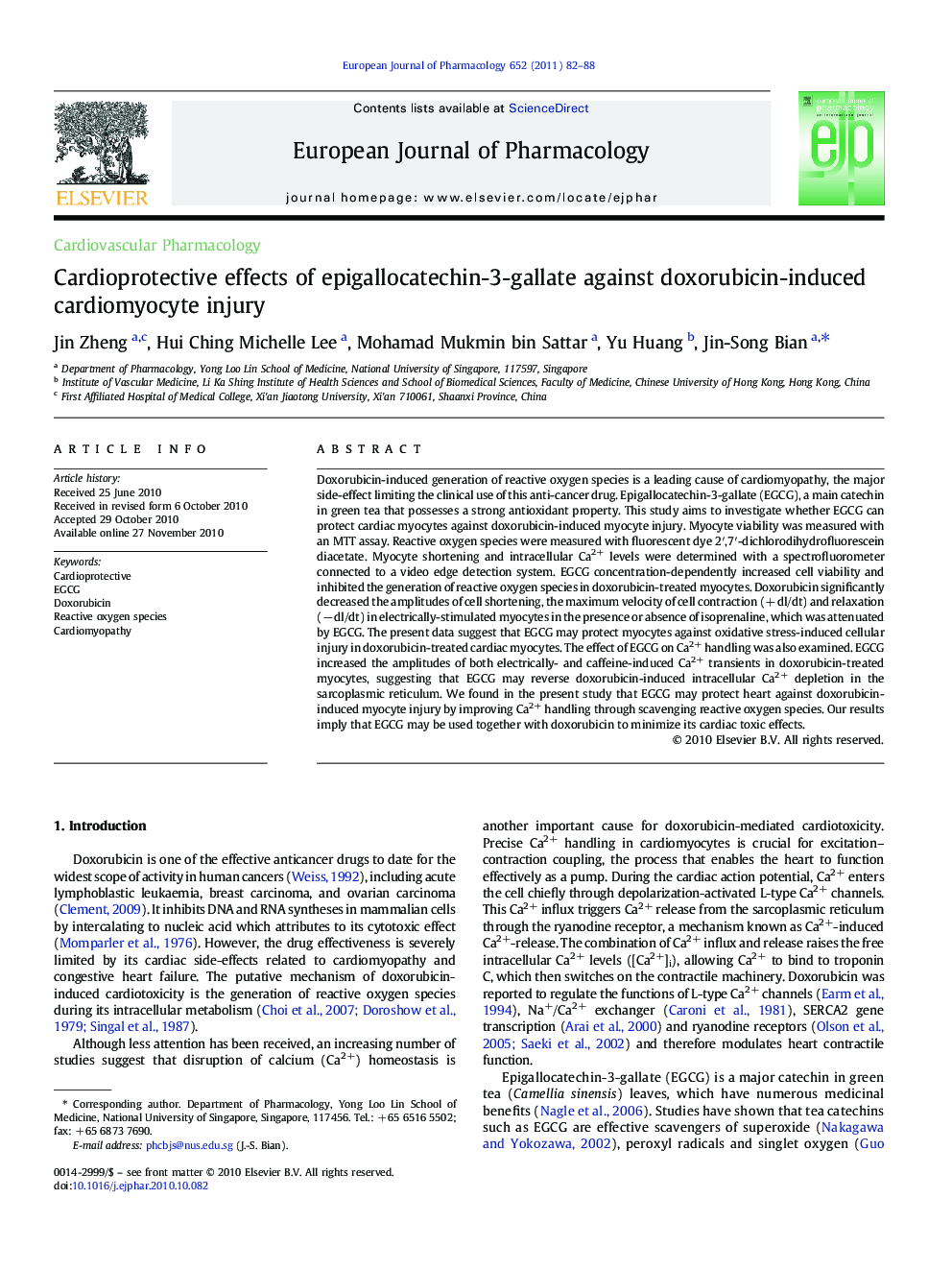| Article ID | Journal | Published Year | Pages | File Type |
|---|---|---|---|---|
| 2532999 | European Journal of Pharmacology | 2011 | 7 Pages |
Doxorubicin-induced generation of reactive oxygen species is a leading cause of cardiomyopathy, the major side-effect limiting the clinical use of this anti-cancer drug. Epigallocatechin-3-gallate (EGCG), a main catechin in green tea that possesses a strong antioxidant property. This study aims to investigate whether EGCG can protect cardiac myocytes against doxorubicin-induced myocyte injury. Myocyte viability was measured with an MTT assay. Reactive oxygen species were measured with fluorescent dye 2′,7′-dichlorodihydrofluorescein diacetate. Myocyte shortening and intracellular Ca2+ levels were determined with a spectrofluorometer connected to a video edge detection system. EGCG concentration-dependently increased cell viability and inhibited the generation of reactive oxygen species in doxorubicin-treated myocytes. Doxorubicin significantly decreased the amplitudes of cell shortening, the maximum velocity of cell contraction (+ dl/dt) and relaxation (− dl/dt) in electrically-stimulated myocytes in the presence or absence of isoprenaline, which was attenuated by EGCG. The present data suggest that EGCG may protect myocytes against oxidative stress-induced cellular injury in doxorubicin-treated cardiac myocytes. The effect of EGCG on Ca2+ handling was also examined. EGCG increased the amplitudes of both electrically- and caffeine-induced Ca2+ transients in doxorubicin-treated myocytes, suggesting that EGCG may reverse doxorubicin-induced intracellular Ca2+ depletion in the sarcoplasmic reticulum. We found in the present study that EGCG may protect heart against doxorubicin-induced myocyte injury by improving Ca2+ handling through scavenging reactive oxygen species. Our results imply that EGCG may be used together with doxorubicin to minimize its cardiac toxic effects.
